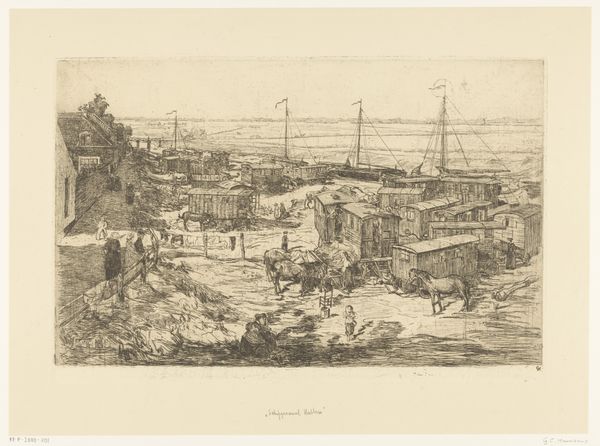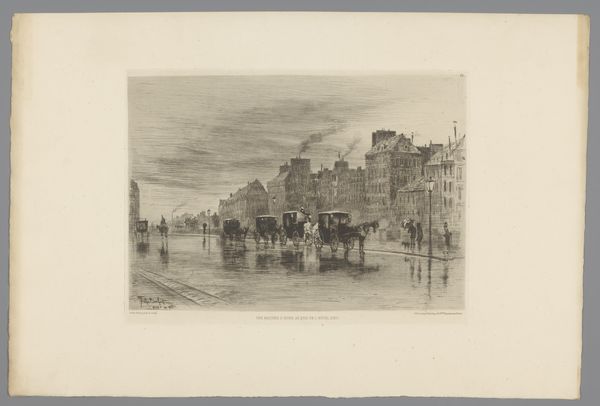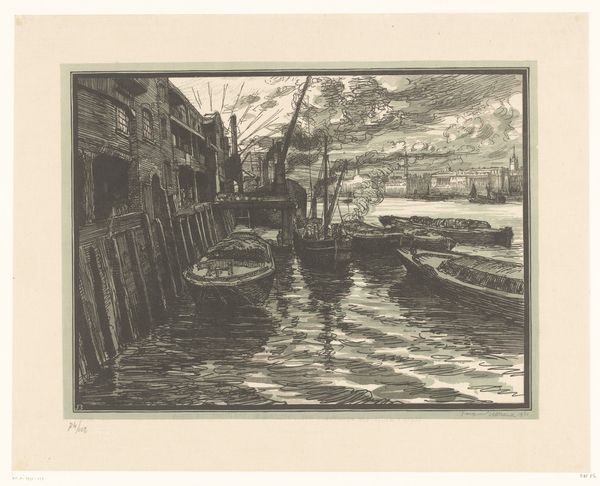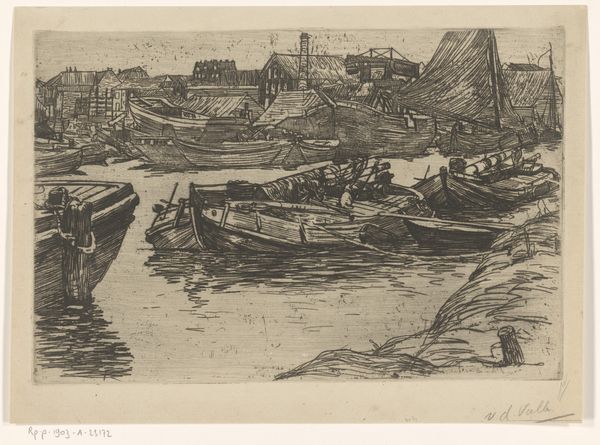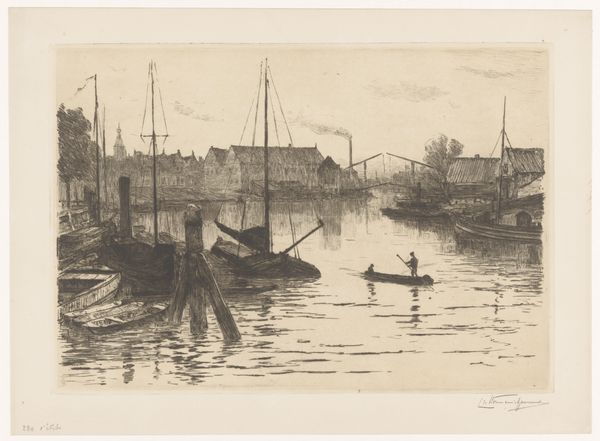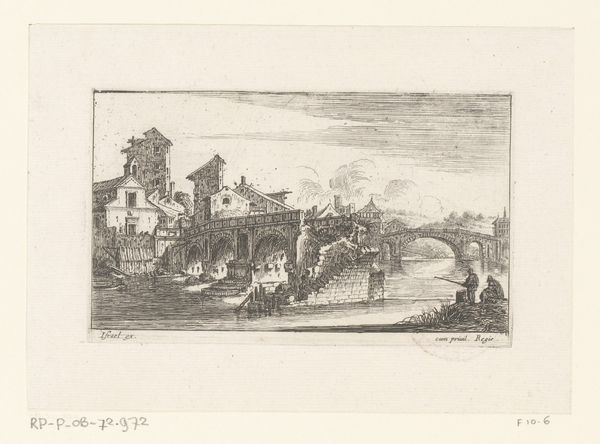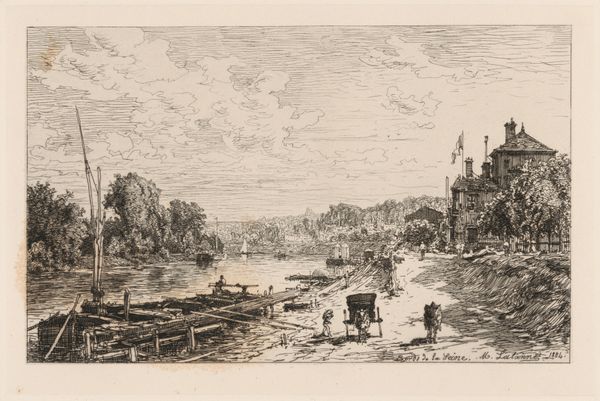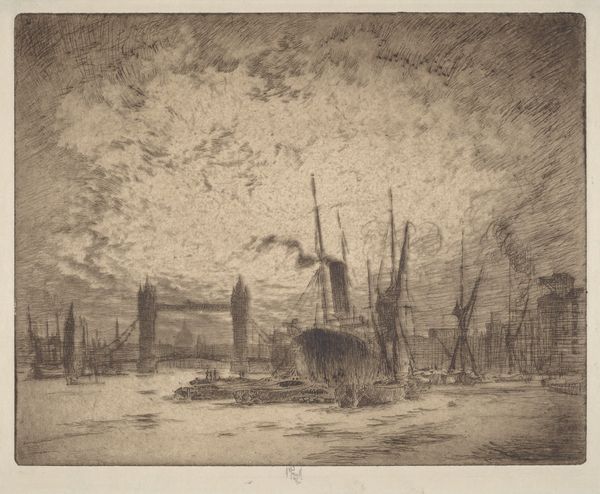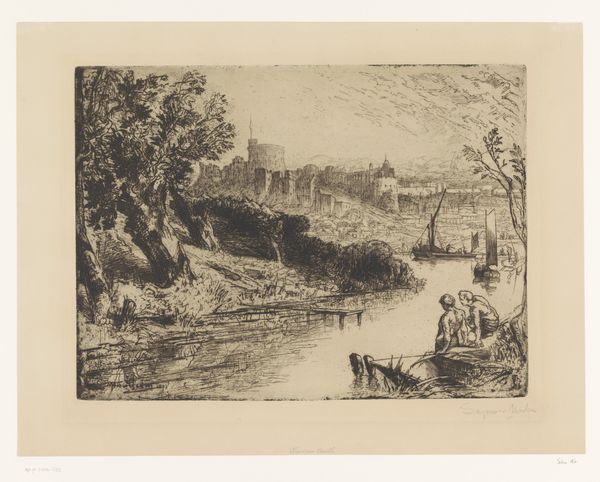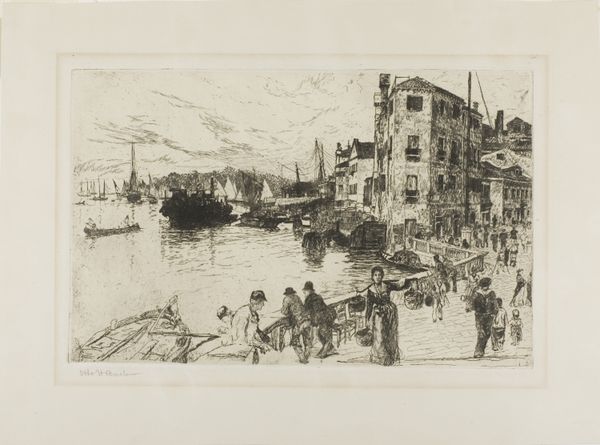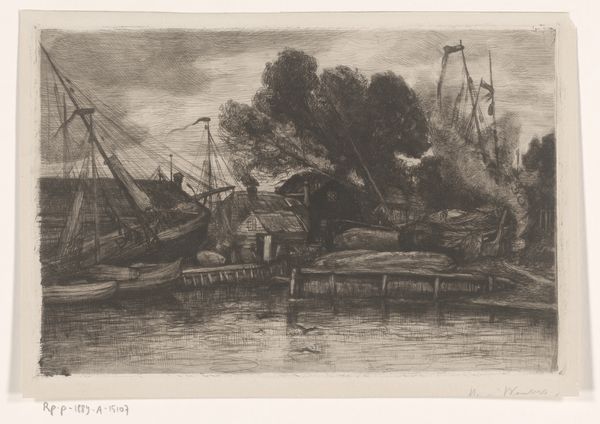
print, etching
# print
#
etching
#
landscape
#
cityscape
#
history-painting
#
realism
Dimensions: height 476 mm, width 667 mm
Copyright: Rijks Museum: Open Domain
Curator: This is an etching titled "Rivier bij Verdun ten tijde van de Eerste Wereldoorlog," placing it sometime between 1880 and 1930, and it is currently held at the Rijksmuseum. Editor: Destruction, frankly. I see a city on the water’s edge, but buildings have been brutally damaged, a cityscape ripped apart. There's a very somber tone here, all muted greys reflecting in the river. Curator: Indeed, the artist, Bernard Klene, captured the visible damage to infrastructure—likely residential—along the river. But let’s think about the physical act of etching. It involves corrosive materials; the image is literally eaten away from the plate. This echoes the corrosive effect of war. Editor: That’s interesting. To me, the ruined structures, partially mirrored in the water, evoke a sense of lost grandeur, of history tragically altered. The river becomes a kind of Styx, a symbolic boundary marking irrevocable change and the shadows of what used to be. There are no people, only structures. Curator: Exactly, the emptiness, the ruins *are* the subject. Notice how Klene utilizes the etching technique— those cross-hatched lines, the density of the darks… The process allows for this striking level of detail. It’s industrial art documenting industrial warfare's devastating output, which became, itself, mass consumed. The work becomes historical artifact. Editor: And that symbolism runs deep! Water often represents cleansing or renewal. But here, it reflects only the decay, reinforcing a sense of lasting trauma. Even the light seems muted, veiled. There’s very little hope visually offered here. Curator: It offers a critical perspective. Klene is pointing us toward an awareness of wartime consequences through the careful, almost methodical depiction of destruction, but also considers the role the work, the medium, the print itself will serve. Editor: A powerful convergence of medium, message, and lasting symbolic resonance. It leaves you contemplating not just what was lost, but the weight of its memory.
Comments
No comments
Be the first to comment and join the conversation on the ultimate creative platform.
